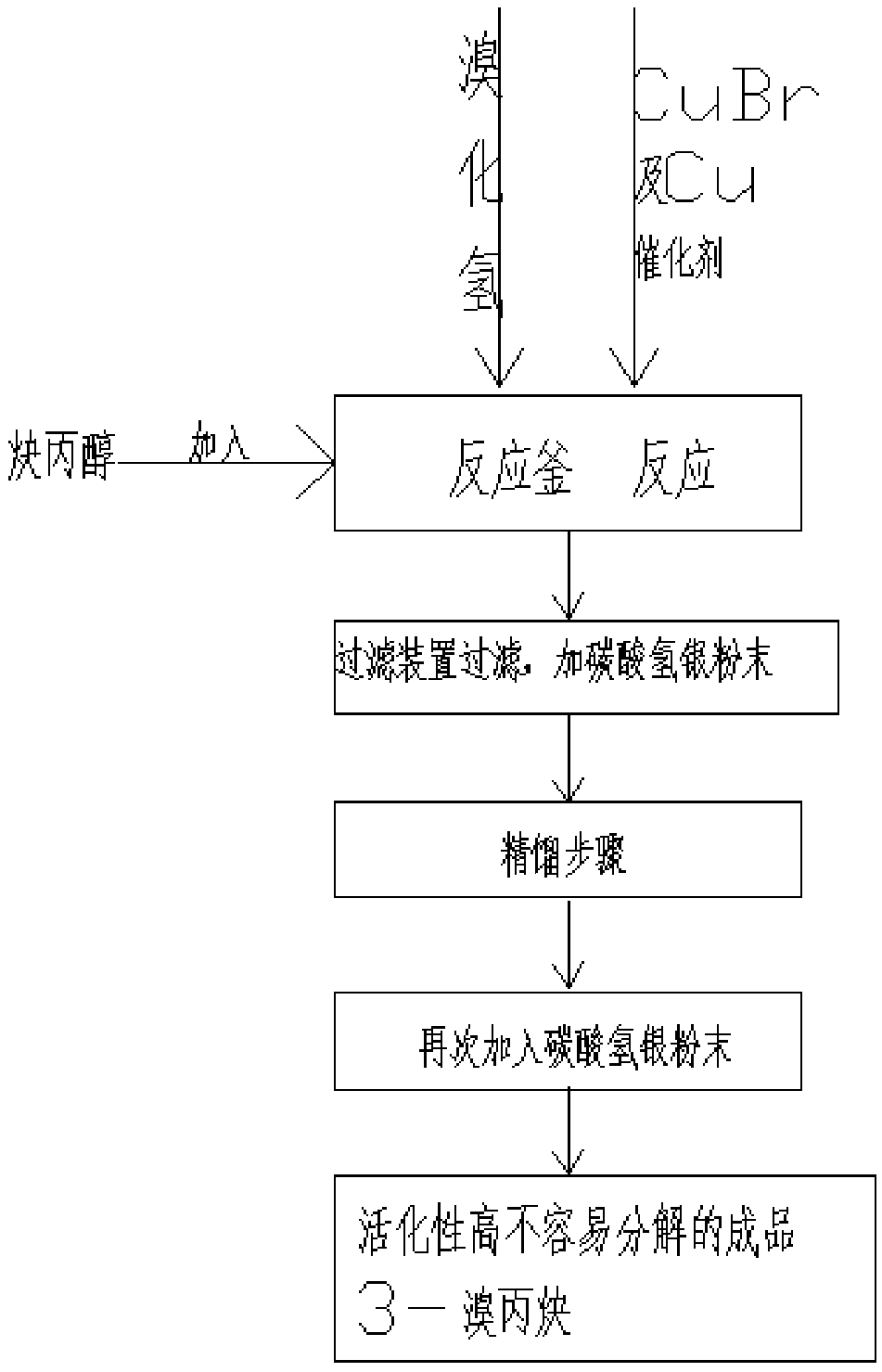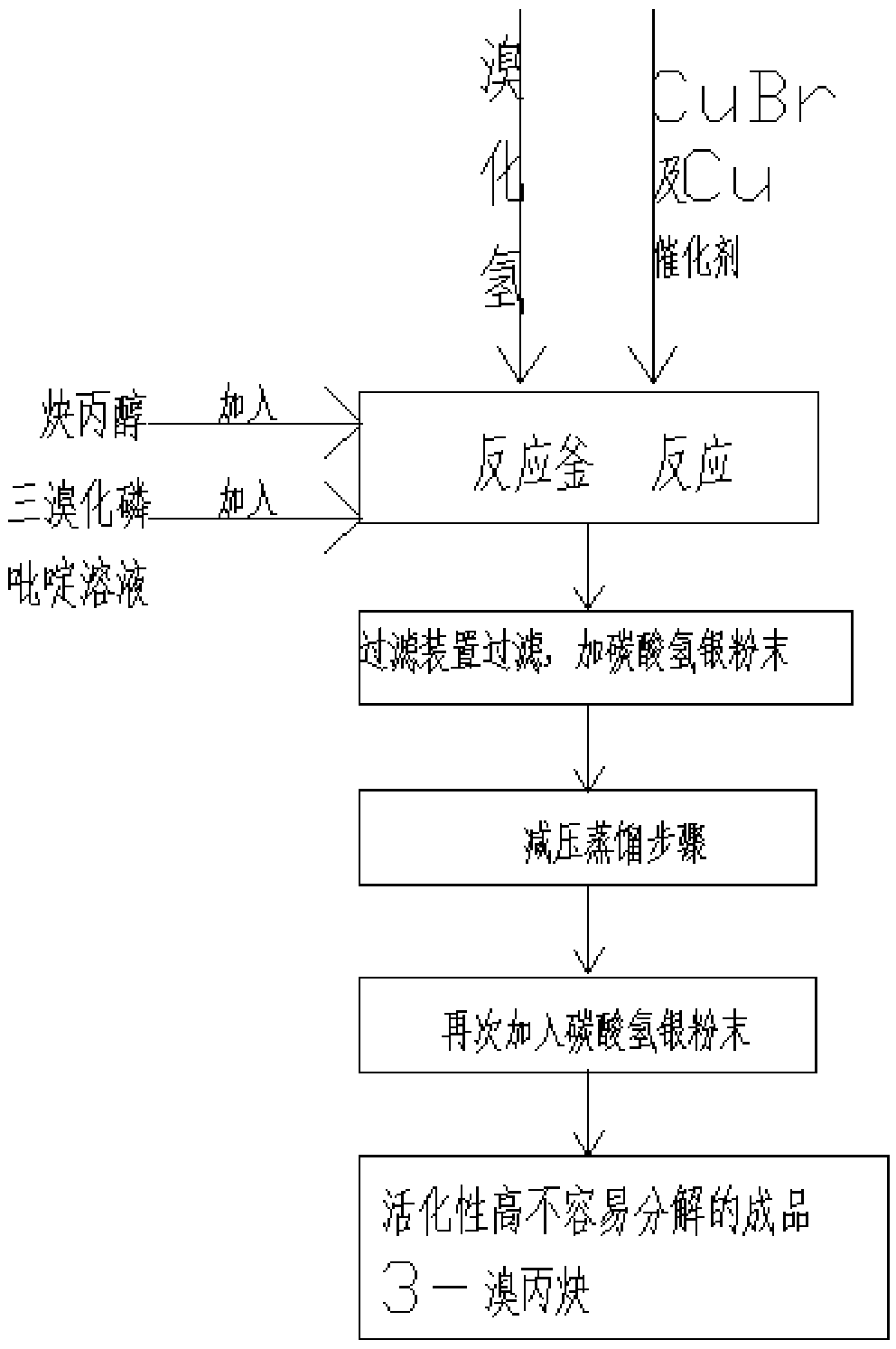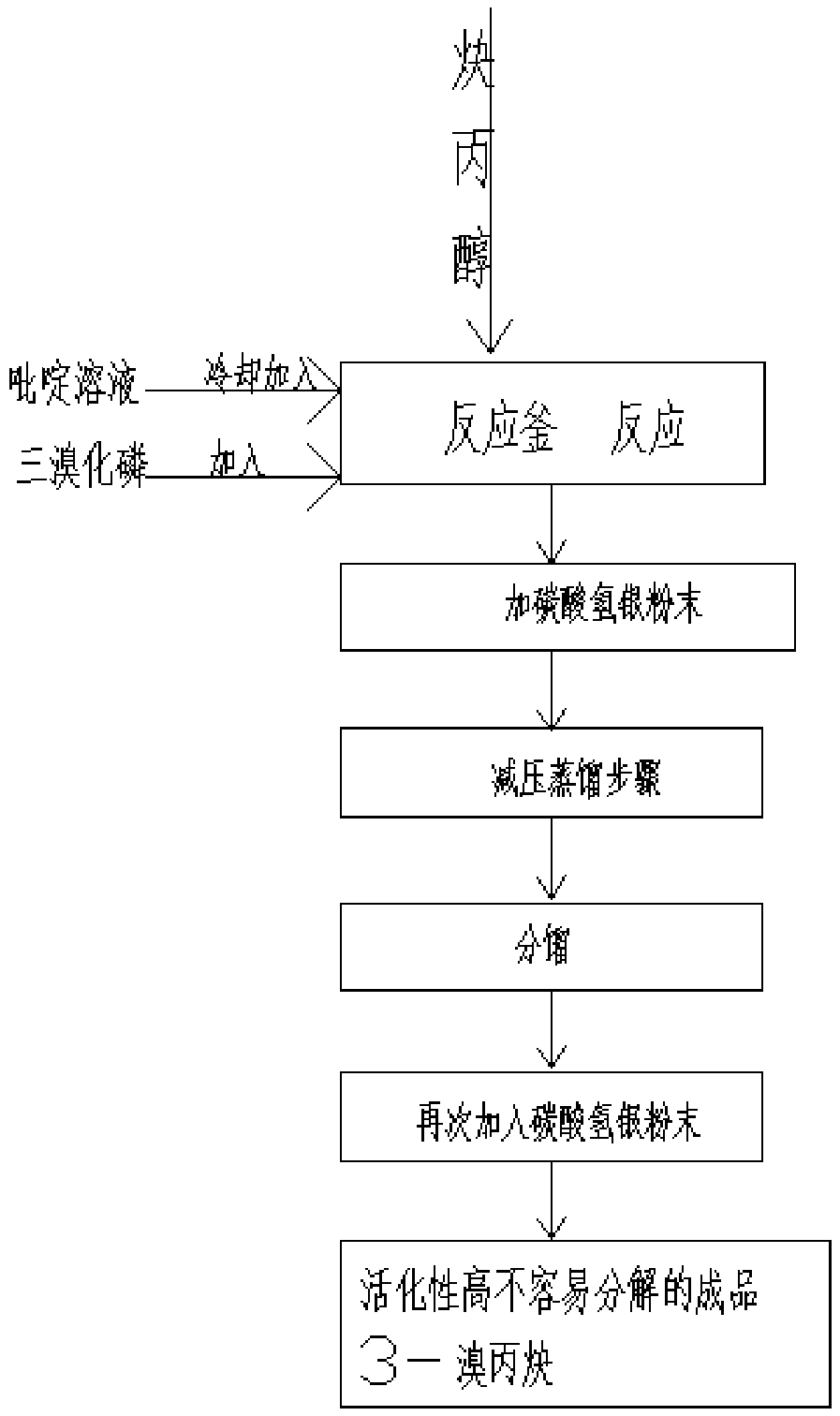Method for activating 3-bromopropyne
A technology of bromopropyne and propargyl alcohol, which is applied in the field of activating 3-bromopropyne, can solve problems such as unfavorable industrialization, activity reduction, and large-scale production constraints, and achieve the effect of good application prospects and good industrial production potential
- Summary
- Abstract
- Description
- Claims
- Application Information
AI Technical Summary
Problems solved by technology
Method used
Image
Examples
specific Embodiment 1
[0044] Add hydrogen bromide solvent to the reaction kettle, add CuBr and Cu catalyst, stir and heat in a sealed environment, and at the same time add propargyl alcohol for reaction, the temperature rises at 50 ° C ~ 70 ° C, and the reaction is carried out for 1-3 hours; in the above process, pass through the filter device Filter, and add silver bicarbonate powder; rectify to obtain finished product 3-bromopropyne; add silver bicarbonate powder again to obtain low-water finished product 3-bromopropyne with high activation and not easy to decompose, such as attached. figure 1 shown in the flowchart.
specific Embodiment 2
[0045] Add hydrogen bromide solvent to the reaction kettle, add CuBr and Cu catalyst, stir in a sealed environment, add a small amount of pyridine to the dry propargyl alcohol at the same time, and add phosphorus tribromide and a small amount of phosphorus tribromide at 0 °C under stirring. The pyridine solution was stirred for 20 minutes after dropping, and propargyl alcohol and silver bicarbonate powder were added to react, the temperature was raised, and the reaction was performed under reduced pressure for 2 hours to obtain the product 3-bromopropyne, wherein the vacuum distillation step included subjecting the oil layer to a high-efficiency rectifying tower Rectification, collecting 130-150 ℃ pressure (6.7kPa) fractional distillation, the product is 3-bromopropyne, and adding silver bicarbonate powder again to obtain low-water product 3-bromopropyne with high activation and not easy to decompose, such as attached figure 2 shown in the flowchart.
specific Embodiment 3
[0046] Add propargyl alcohol to pyridine under cooling, stir at -5 °C and slowly add phosphorus tribromide, the reaction temperature is maintained below 0 °C, after the addition, continue stirring for 15min, add silver bicarbonate powder, and distill under reduced pressure, wherein , the vacuum distillation step includes rectifying the oil layer with a high-efficiency rectifying tower, collecting 130-150 ° C, collecting all the distillate under the pressure (6.7kPa), and fractionating it again under normal pressure to obtain the finished product 3-bromopropyne , adding silver bicarbonate powder again to obtain 3-bromopropyne, a low-water product with high activation and not easy to decompose. image 3 shown in the flowchart.
[0047]In the present invention, because the chemical intermediate 3-bromopropyne with high purity is placed for a period of time, it will decompose in a small amount. After the decomposition, the activity equivalent to the pharmaceutical intermediate 3-b...
PUM
 Login to View More
Login to View More Abstract
Description
Claims
Application Information
 Login to View More
Login to View More - R&D Engineer
- R&D Manager
- IP Professional
- Industry Leading Data Capabilities
- Powerful AI technology
- Patent DNA Extraction
Browse by: Latest US Patents, China's latest patents, Technical Efficacy Thesaurus, Application Domain, Technology Topic, Popular Technical Reports.
© 2024 PatSnap. All rights reserved.Legal|Privacy policy|Modern Slavery Act Transparency Statement|Sitemap|About US| Contact US: help@patsnap.com










